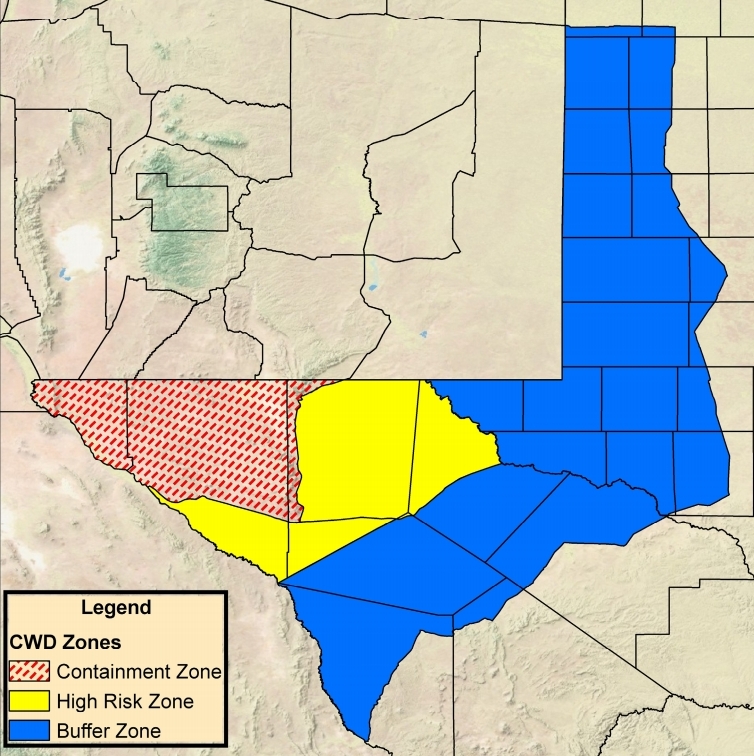Texas Parks and Wildlife Department (TPWD) has developed a CWD Containment Zone Map for West Texas in an effort to better track and Chronic Wasting Diease (CWD) in the Trans-Pecos. TPWD is asking mule deer hunters and landowners in far West Texas to familiarize themselves with new protocols developed as part of the TPWD CWD response plan. The plan includes mandatory CWD check stations for harvested mule deer taken inside the CWD Containment Zone, which covers portions of Hudspeth and El Paso counties.
The response plan is being implemented after tissue samples from two mule deer in far West Texas this past summer tested positive for CWD. Though these are the first cases of CWD detected in Texas deer, deer had tested positive in recent years across the border in New Mexico. Now, it’s official that CWD has been found in Texas and TPWD is looking to monitor the reach of the disease.

CWD workshops will be held in conjunction with upcoming TPWD public hearings to inform landowners, hunters, and outfitters about CWD, care of meat, appropriate management actions, and check station requirements. TPWD will present proposed amendments to deer movement rules, answer questions and take public comment during the public hearing segment of the meetings.
CWD meetings are set for October 2 in Fort Stockton at the Pecos County Civic Center, Octber 3 in Alpine at the Alpine Independent School District Auditorium, and Octber 4 in Van Horn at the Van Horn Convention Center. All workshops will start at 6 p.m. and the public hearing will begin at 7:30 p.m.
More on CWD in Deer
CWD is a member of the group of diseases called transmissible spongiform encephalopathies (TSEs). Other diseases in this group include scrapie in sheep, bovine spongiform encephalopathy (BSE or mad cow disease) in cattle, and Cruetzfeldt-Jakob disease in humans. CWD among cervids is a progressive, fatal disease that commonly results in altered behavior as a result of microscopic changes made to the brain of affected animals.
An animal may carry the disease for years without outward indication, but in the latter stages, signs may include listlessness, lowering of the head, weight loss, repetitive walking in set patterns, and a lack of responsiveness. CWD is not known to affect humans.
There is no vaccine or cure for CWD, but steps have been taken to minimize the risk of the disease spreading from beyond the area where it currently exists. For example, within the CWD Containment Zone, human-induced movements of wild or captive deer, elk, or other susceptible species will be restricted and mandatory hunter check stations will be established. CWD tests can only be performed on dead deer.